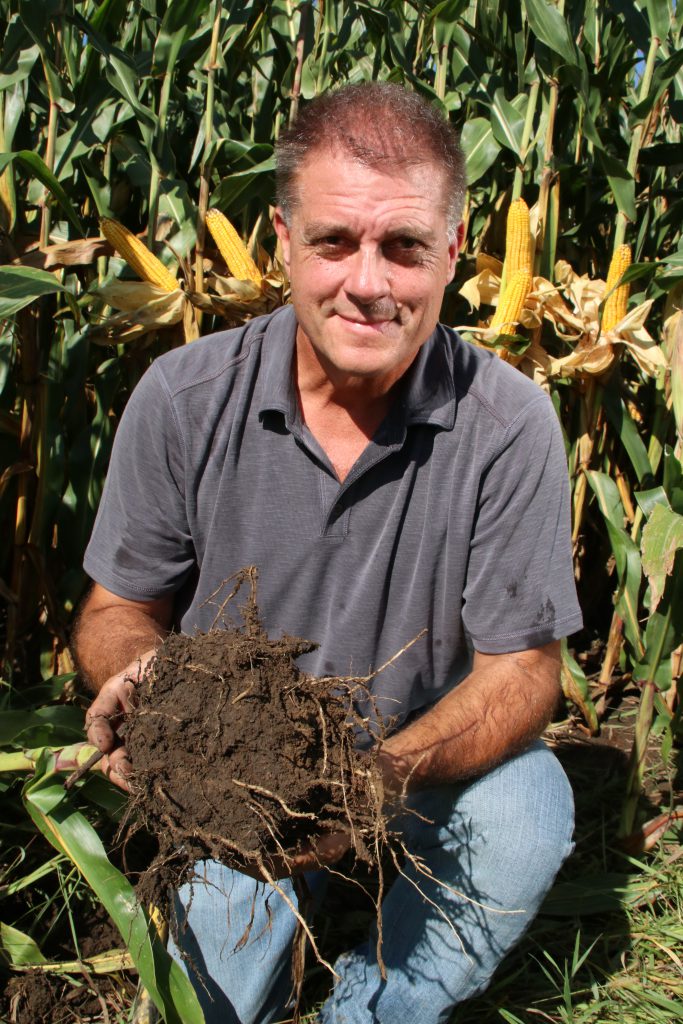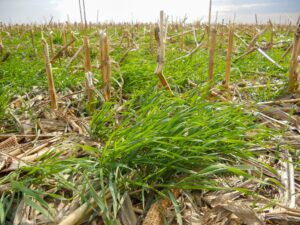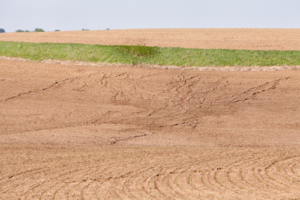By: 4R Plus
November 2019

A long history of tillage on the farm caused Tim Recker from Fayette County, Iowa, to wonder if he was doing what was right for the long-term health of his soil. With goals to stop erosion, build organic matter and improve soil structure, he switched to a system of no-till that incorporates cover crops.
“Tests revealed my organic matter was declining and the amount of topsoil that I had left was being depleted. And it’s not because I wasn’t doing a good job of farming. I was getting good yields,” he said. “But I wasn’t building that most important top two feet of soil.”
Now he’s an advocate for no-till and cover crops. “I’m seeing better water infiltration, soil not moving, soil health improving and no lack of yields from putting that all together,” he added. “Every farmer has a different system and you have to manage a cover crop just like you manage a corn and soybean rotation. That means planning and following your plan.”
Recker’s first experience with cover crops was in 2012. A dry fall led to disappointing emergence, but he was determined. He made tweaks until he found success.
“The hardest part of my transition from tillage to a no-till and cover crops system was right between my ears. Mentally, I saw success in tillage,” he said. “The cool thing is now I see greenness in the fall and spring around me instead of black fields. We need to keep this ground covered. We need to feed our soil all year long.”
Recker encourages farmers to start small when adding cover crops, utilize cost-share programs and ask their agronomist and local retailer for advice and help getting started. “It’s well worth the investment. I have about $20 per acre in total costs associated with cover crops. The 5-bu. to 7-bu.-per-acre increase in soybean yields I’m seeing from this system generates an additional $40 per acre in revenue,” he said, noting that doesn’t include the other benefits like improved weed control and soil health gains.
“What I’ve seen personally on my farm is the less disruption that I can do on my soil, the better,” he added. “Getting away from tillage has been mentally challenging because I farm heavy, black soil. We thought we had to turn the soil over to absorb heat to make the corn grow. We’re finding out that with today’s advanced genetics, we don’t need to do that.”
With a focus on improving his farm’s profitability, Recker is pinpointing the low-return-on-investment land and making plans to take it out of production. “For the first 30 years of my farming career I was trying to farm every acre and improve it,” he said. “I’m still focused on improving the land, but now I’m using the data I collected to improve economic efficiencies.”
Recker, who also owns and operates a conservation construction business, installed one of the first saturated buffers in Fayette County and is overseeing the construction of the county’s first Conservation Reserve Enhancement Program (CREP) wetland on his land. “I have data that showed me where the wetland would be the most beneficial to my farm and the environment,” he said.
He plans to expand his conservation footprint and enjoys the learning process that goes along with adding 4R Plus practices. “What 4R Plus means to my farm is incorporating all the good things I’ve done in the past with nutrient management and good conservation practices and then adding some new practices like no-till and cover crops to build my topsoil to try to make it more resilient to Mother Nature,” he said.



